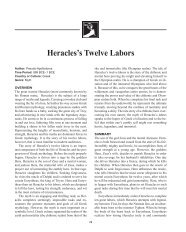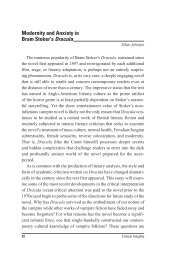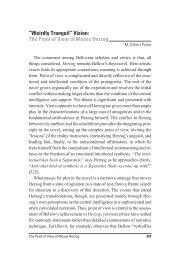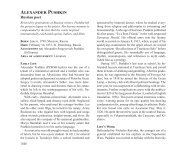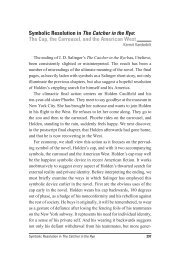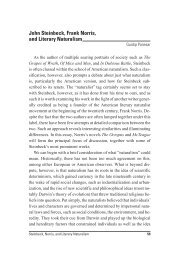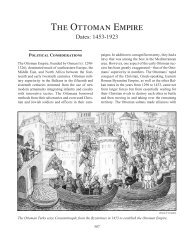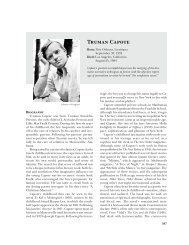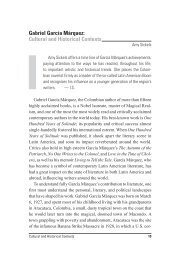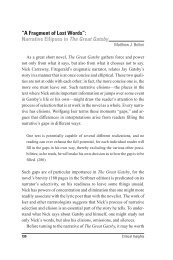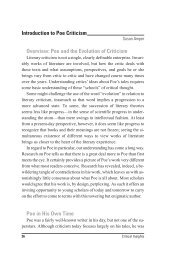The Historical and Social Context of Gwendolyn ... - Salem Press
The Historical and Social Context of Gwendolyn ... - Salem Press
The Historical and Social Context of Gwendolyn ... - Salem Press
Create successful ePaper yourself
Turn your PDF publications into a flip-book with our unique Google optimized e-Paper software.
Ernest Hill. Upon the suggestion <strong>of</strong> James Weldon Johnson, she became<br />
acquainted with poems by modernist writers such as T. S. Eliot,<br />
Ezra Pound, <strong>and</strong> E. E. Cummings (Brooks, Report from Part One 173).<br />
In 1941, her study <strong>of</strong> modern poetry <strong>and</strong> its techniques intensified<br />
through the influence <strong>of</strong> Inez Cunningham Stark when Brooks attended<br />
a poetry class held in the South Side Community Art Center led<br />
by the well-to-do reader for Poetry magazine. Like the early modernists,<br />
Brooks paid particular attention to elements <strong>of</strong> form. <strong>The</strong> result is<br />
“tense, complex, rhythmic verse,” Houston A. Baker, Jr., observes,<br />
“that contains the metaphysical complexities <strong>of</strong> John Donne <strong>and</strong> the<br />
word magic <strong>of</strong> Apollinaire, Eliot, <strong>and</strong> Pound” (21). Baker concludes<br />
that Brooks’s poetry “equal[s] the best in the black <strong>and</strong> white literary<br />
traditions” (28). 4 In addition, Gertrude Reif Hughes argues, Brooks<br />
transforms some <strong>of</strong> the tenets <strong>of</strong> modern poetry as she undermines<br />
male white hegemony in poetry that reflects a feminist African American<br />
perspective (140-43).<br />
By her late teens, Brooks was contributing to the weekly “Lights<br />
<strong>and</strong> Shadows” column <strong>of</strong> the Chicago Defender, an influential newspaper<br />
with a large readership in the African American community. Her<br />
first book was published by Harper <strong>and</strong> Brothers (later Harper & Row),<br />
a major New York press, followed by six subsequent books. Although<br />
Brooks had a productive relationship with her editors at Harper, her<br />
work was subjected to some “requests for revisions,” which, as John K.<br />
Young points out, “reinforc[ed] the aesthetic <strong>and</strong> political issues behind<br />
white consumption <strong>of</strong> black texts.” In 1969, Brooks began to publish<br />
strictly with black presses, including Broadside <strong>Press</strong>, Third World<br />
<strong>Press</strong>, <strong>and</strong> her own press, David Company (Young 97, 94). She pointed<br />
out in an interview with Young that in the late 1960s Broadside <strong>Press</strong>’s<br />
Dudley R<strong>and</strong>all provided a “platform to young Black poets, people<br />
that Macmillan <strong>and</strong> Harper wouldn’t accept” <strong>and</strong> she “decided to go<br />
with a Black publisher <strong>and</strong> give some assistance to them” (qtd. in<br />
Brooks <strong>and</strong> Hawkins 280).<br />
A Street in Bronzeville exhibits a broad repertoire in tone <strong>and</strong> struc-<br />
24 Critical Insights



